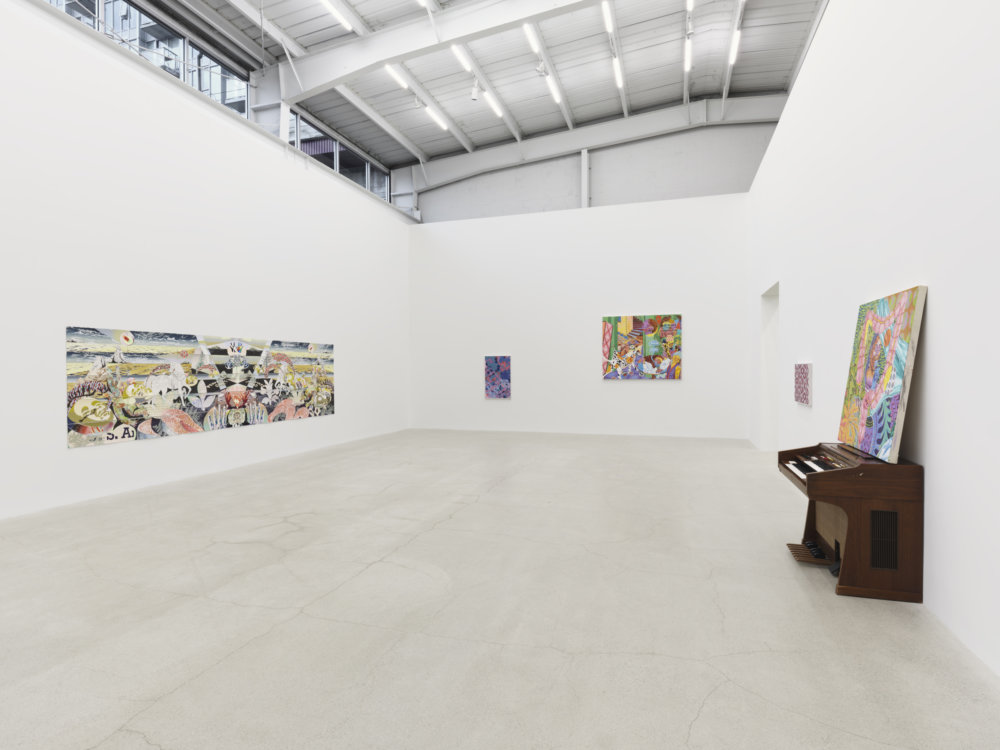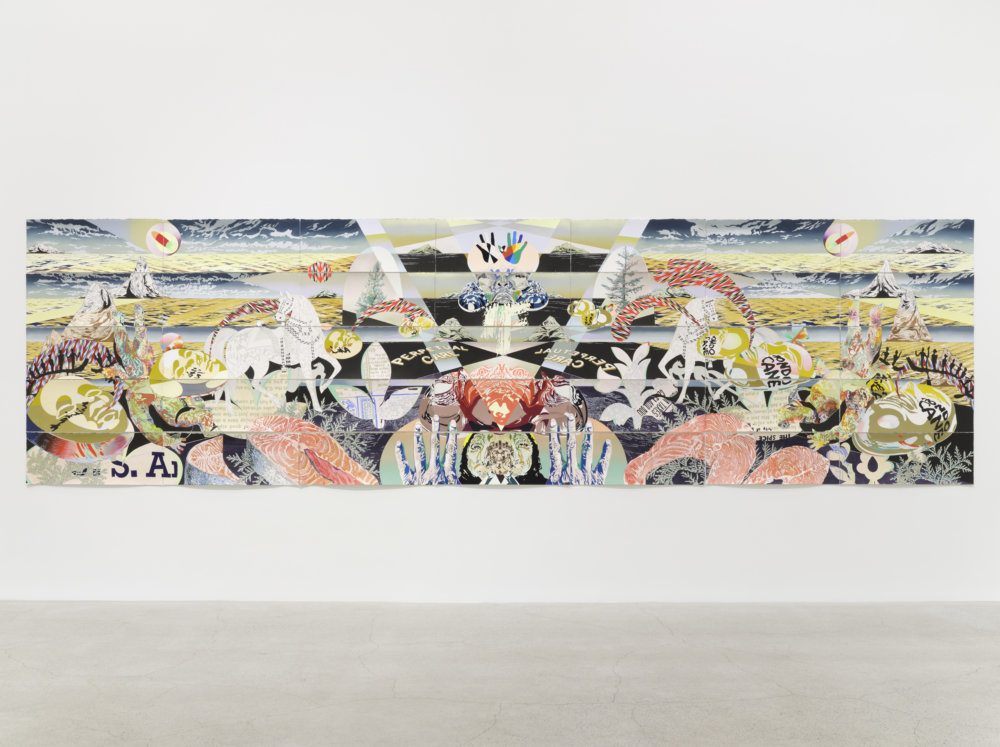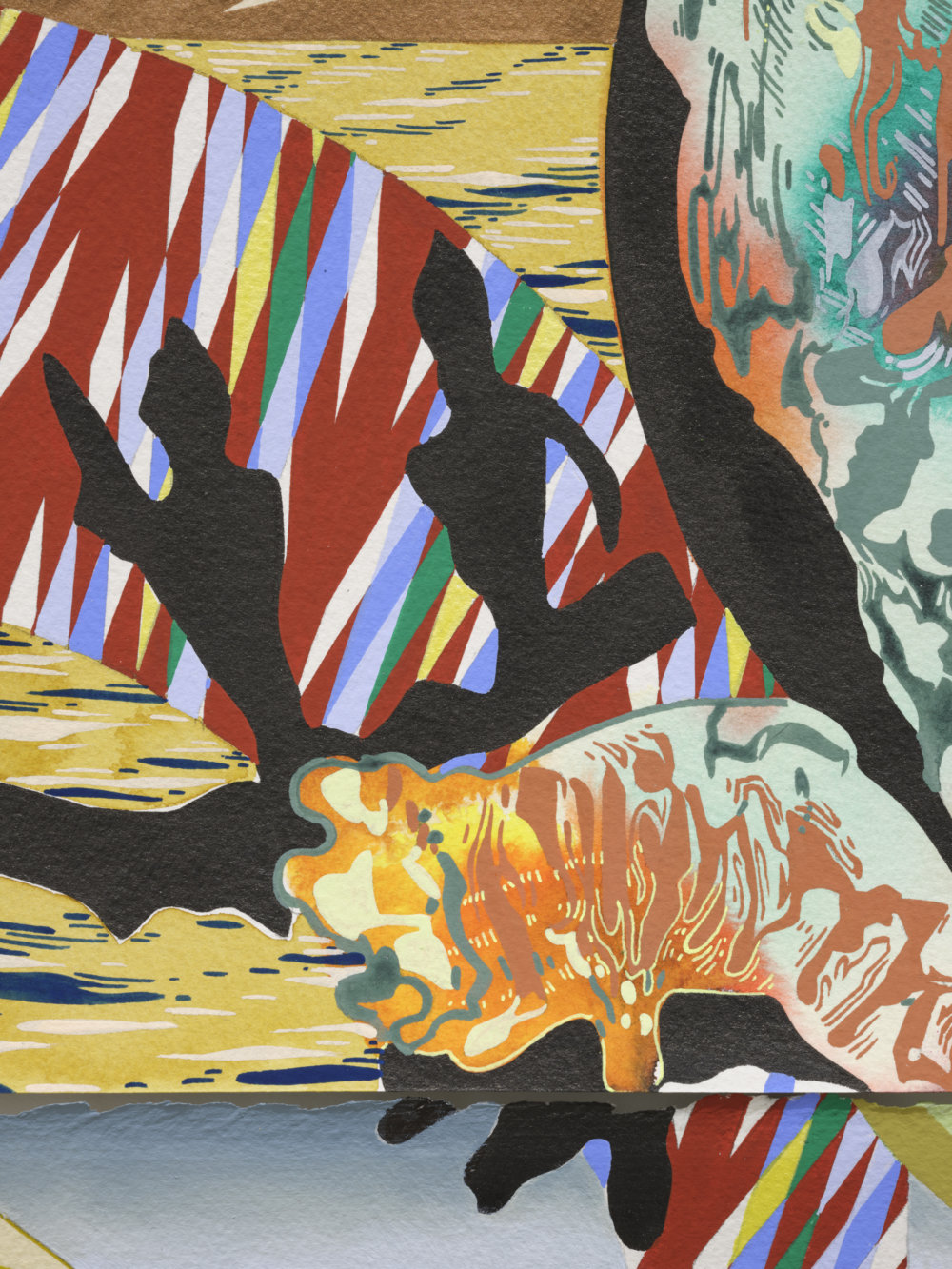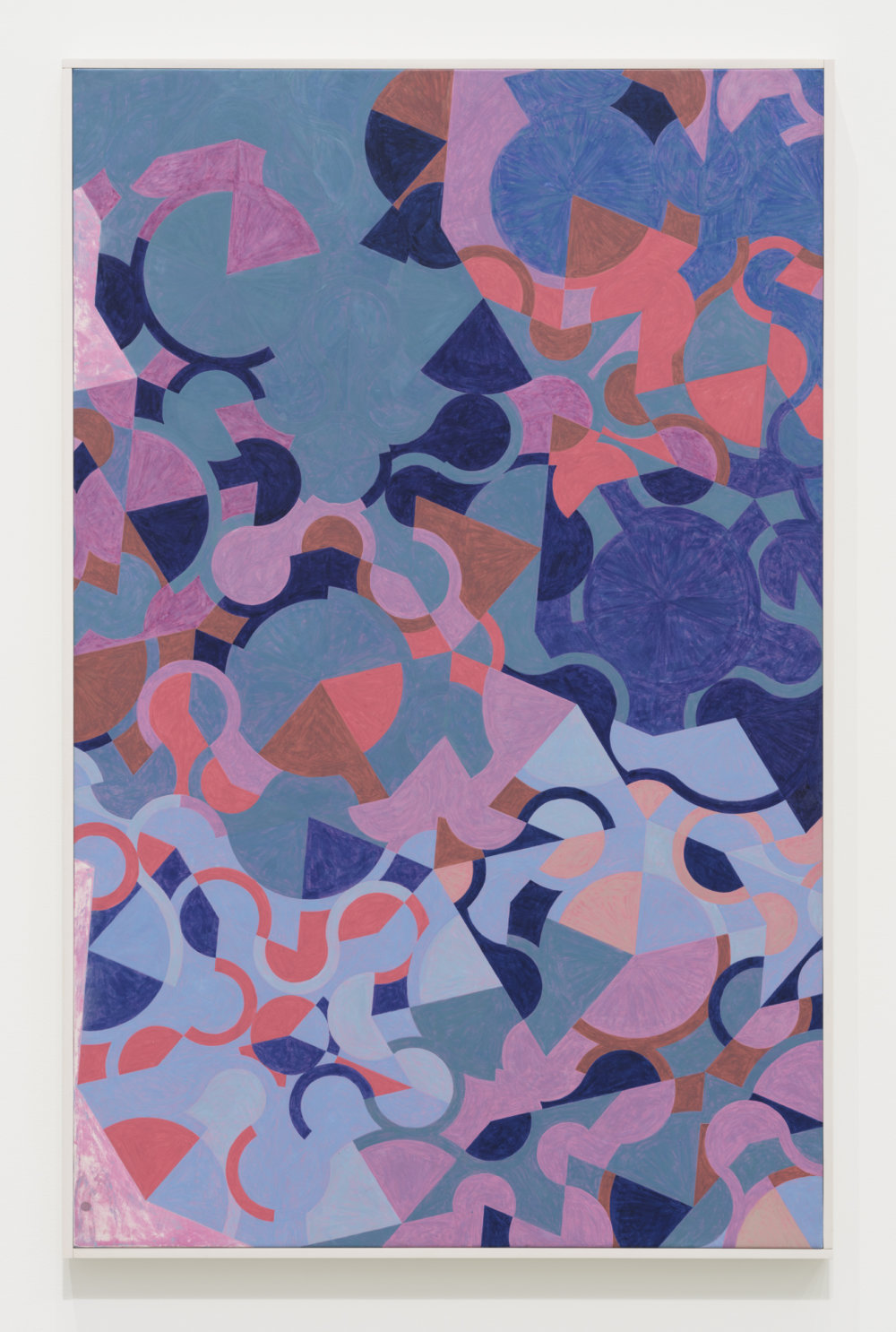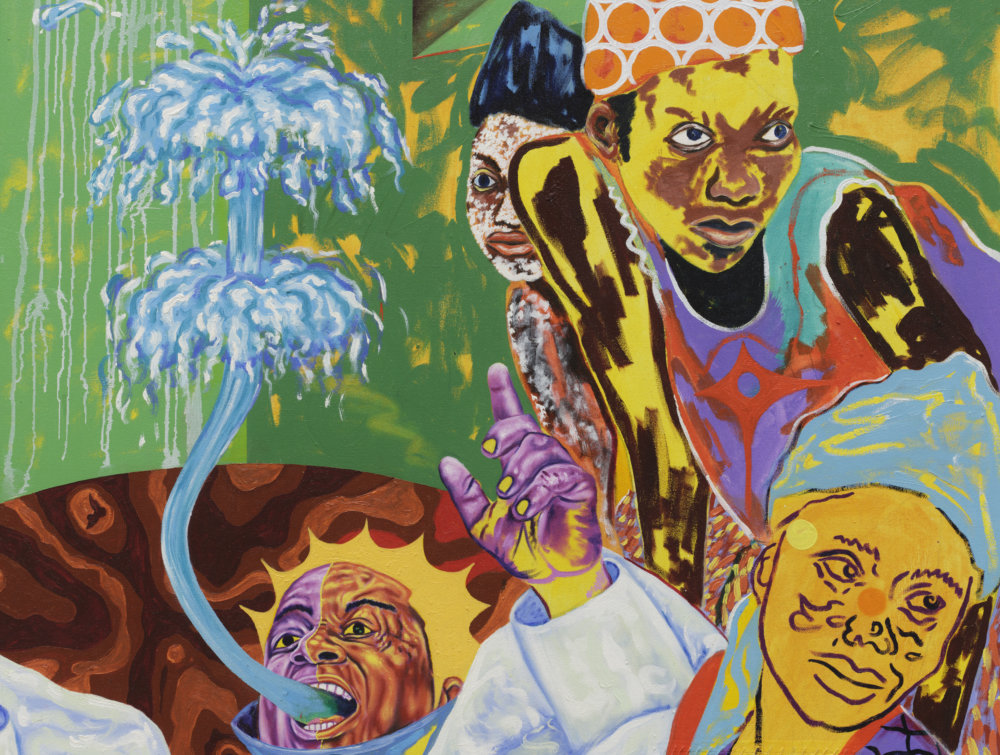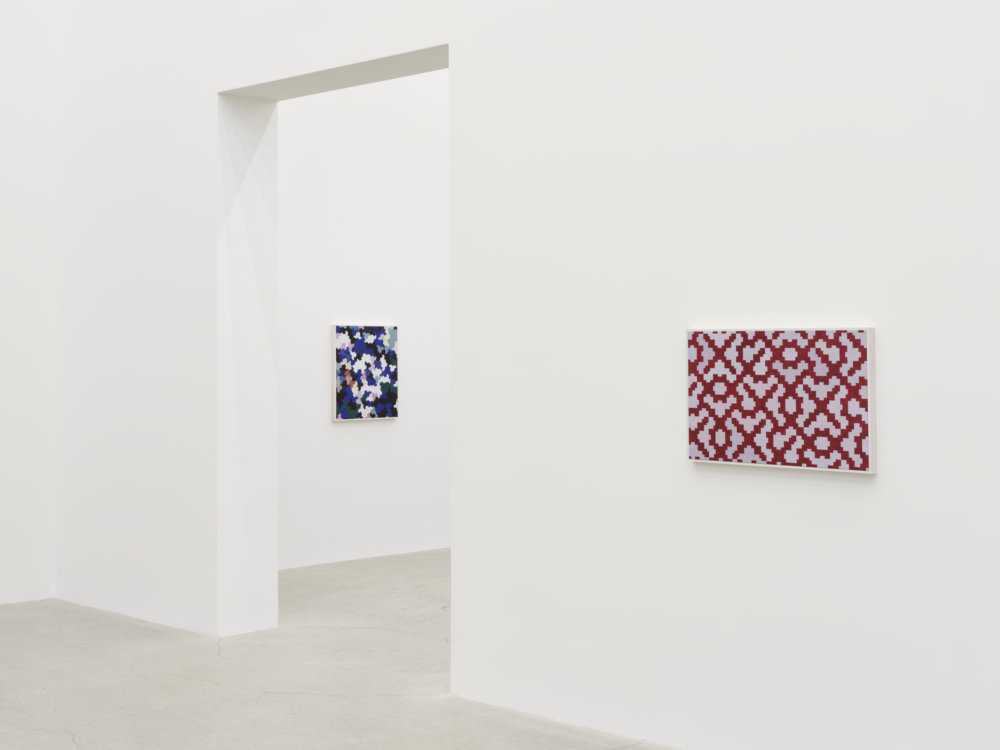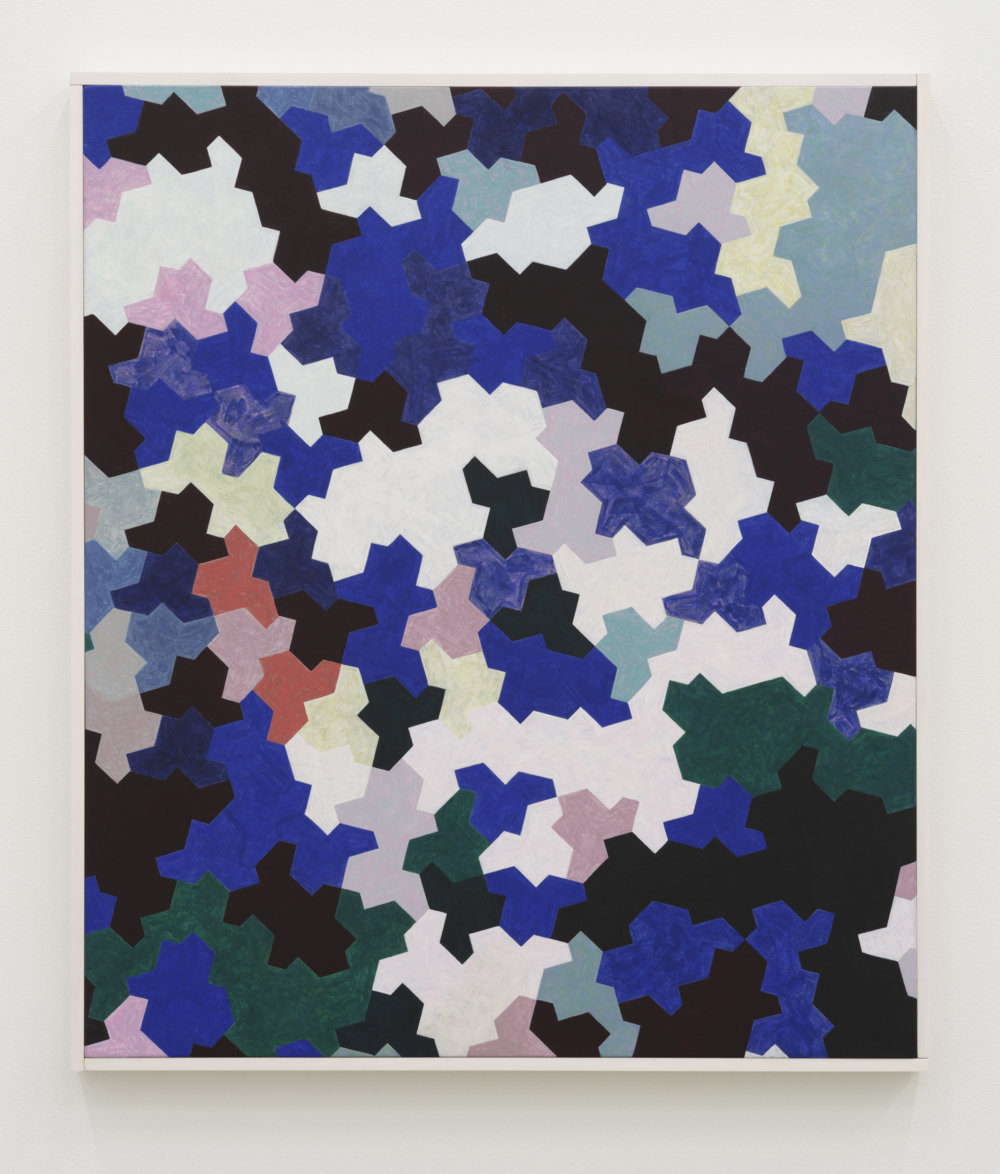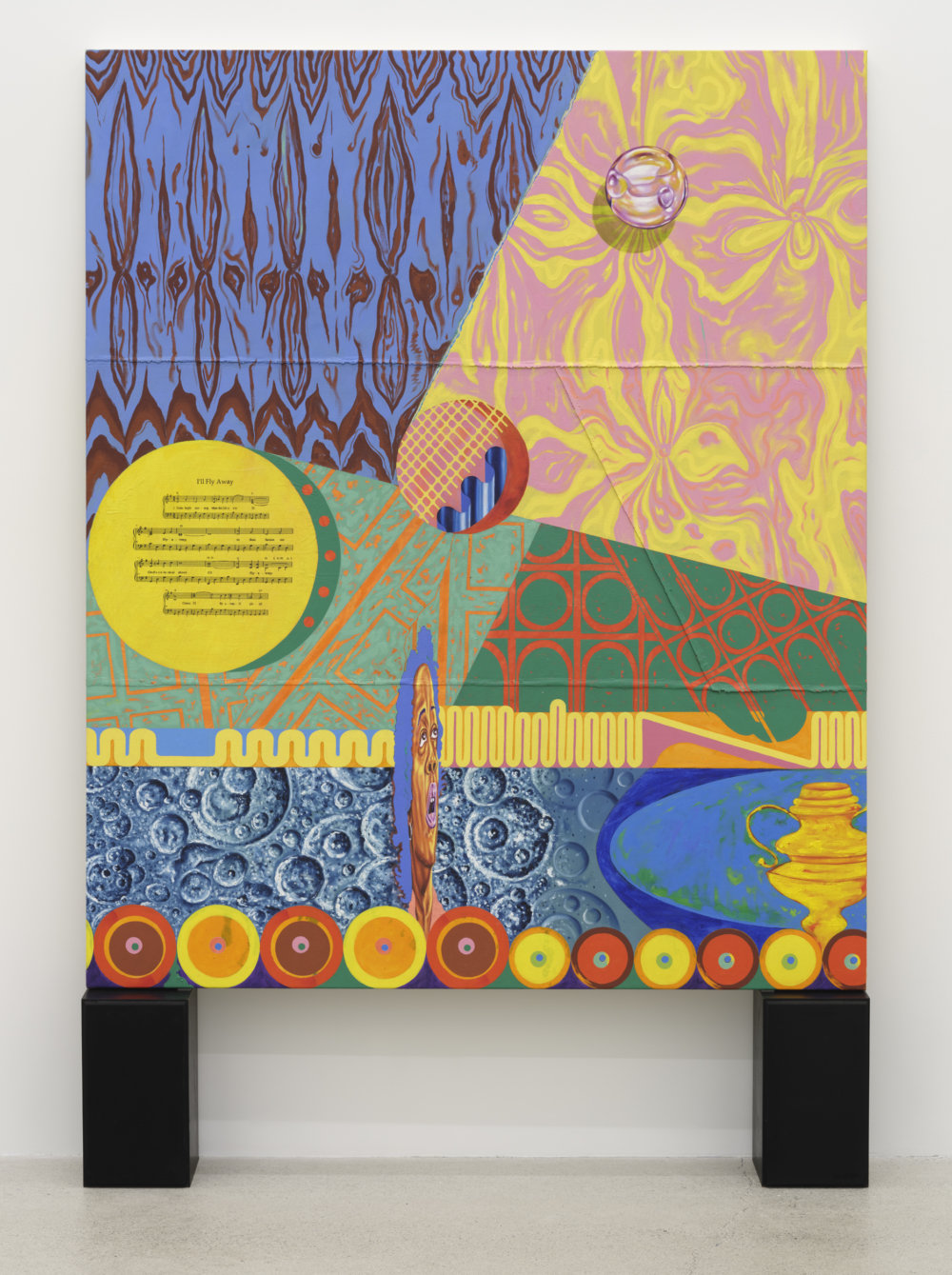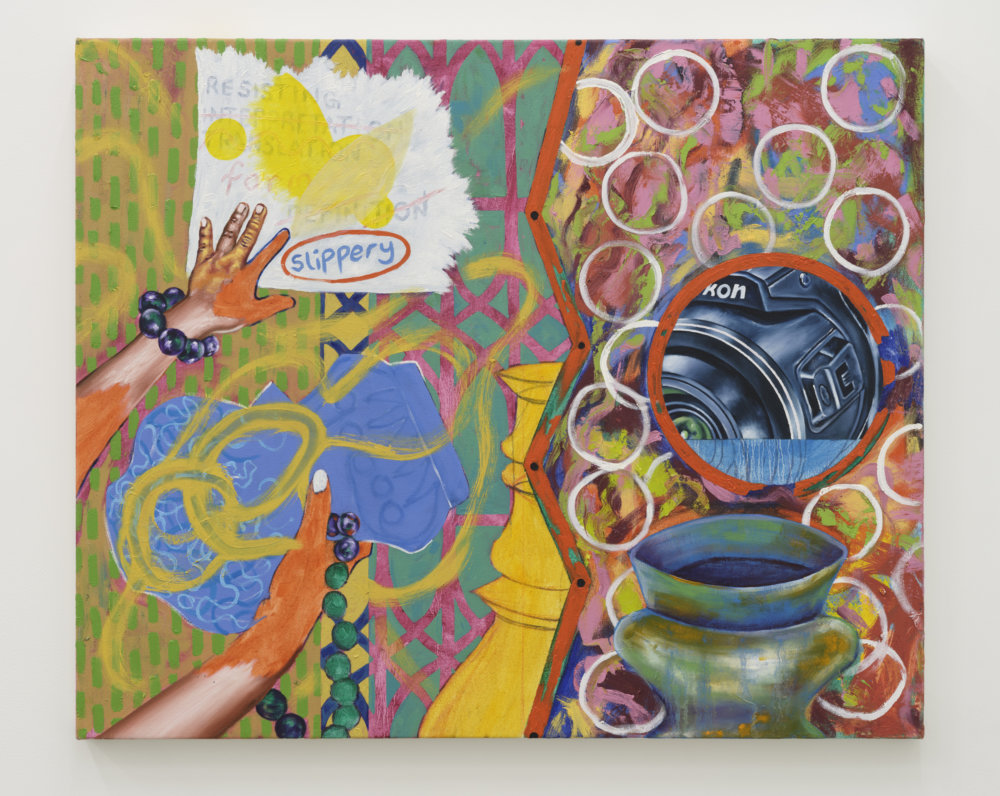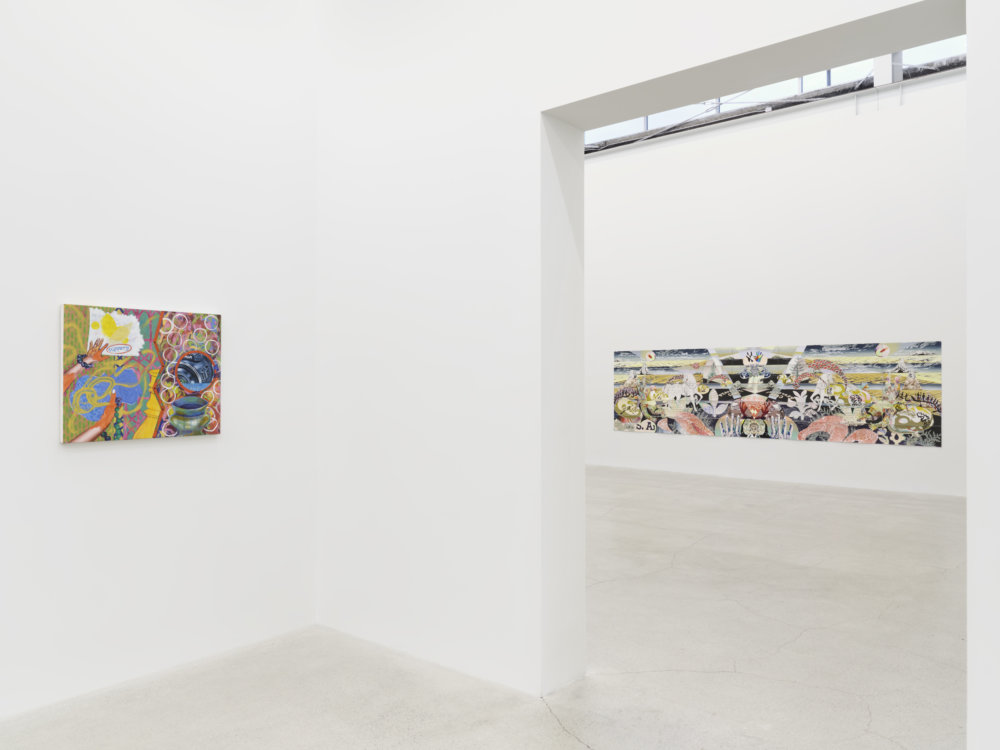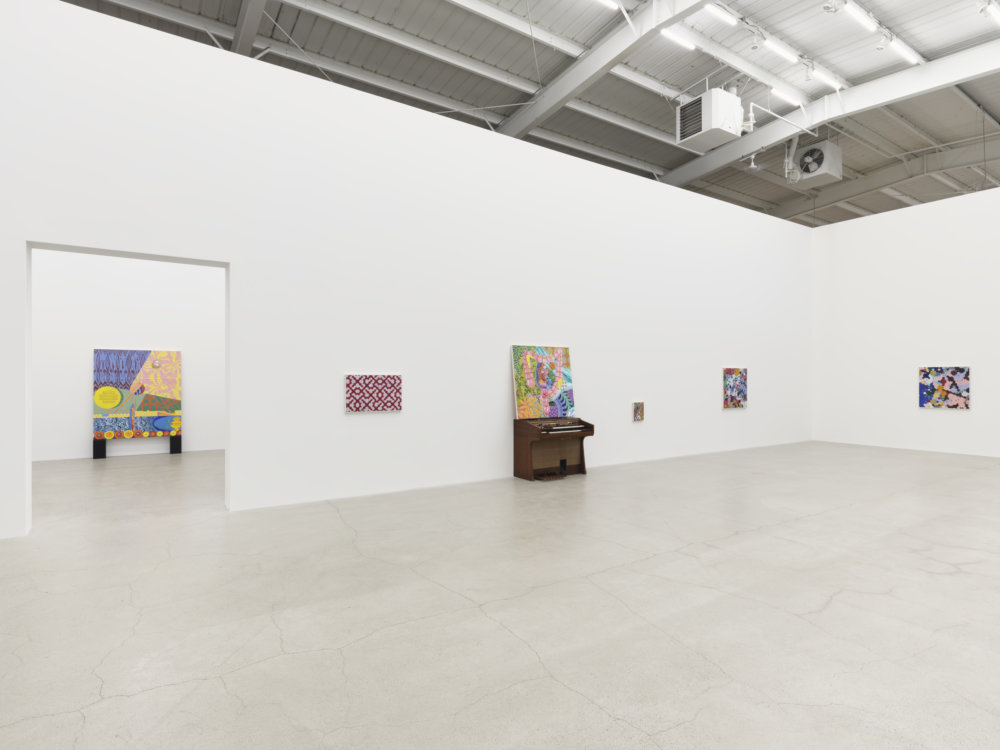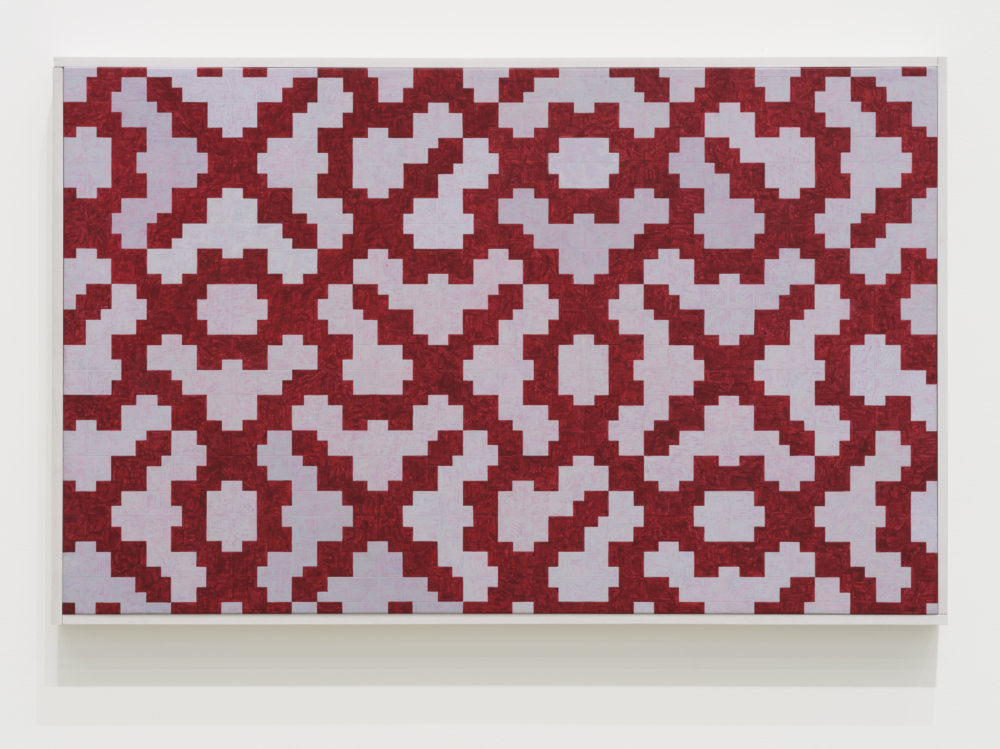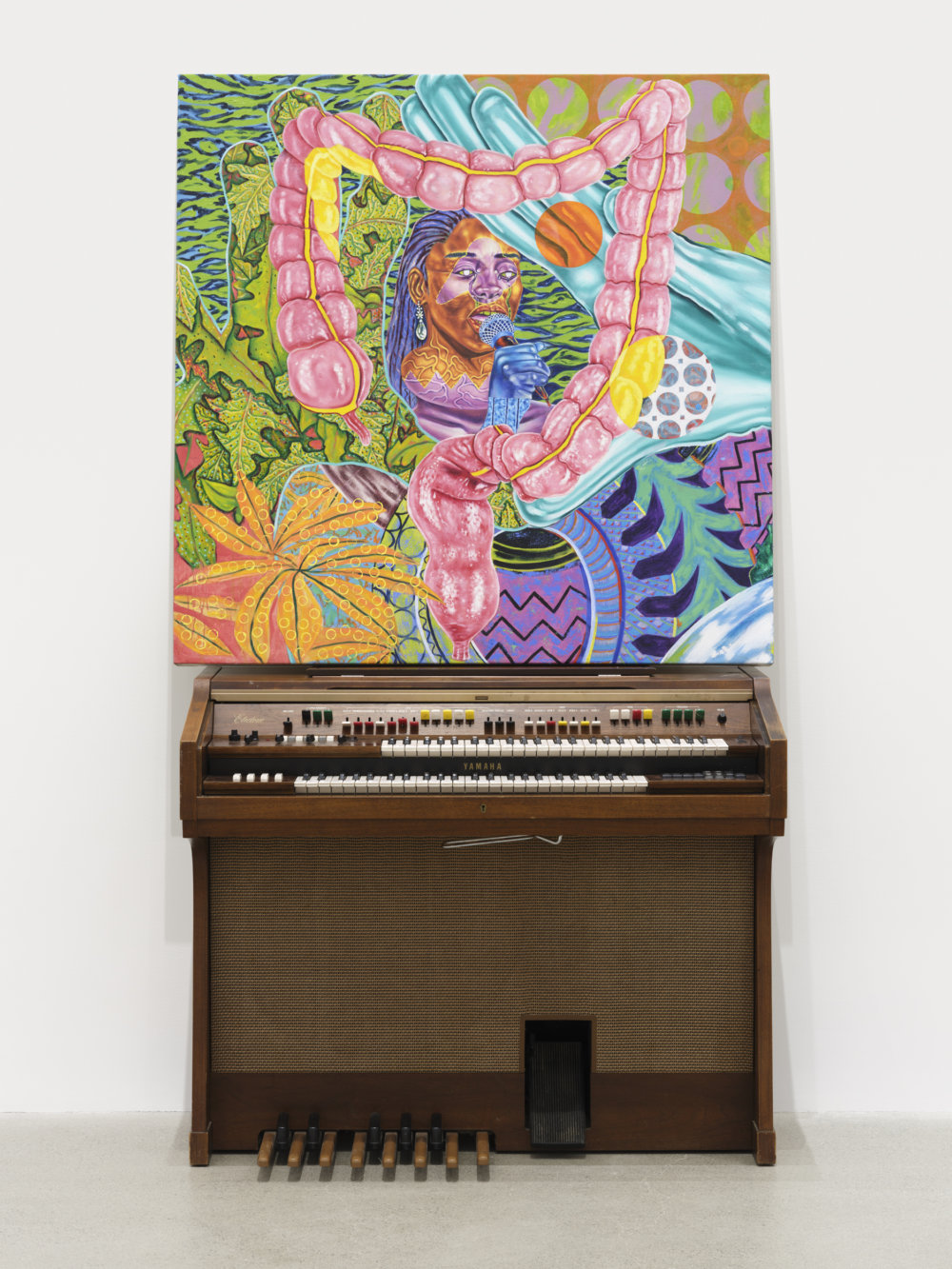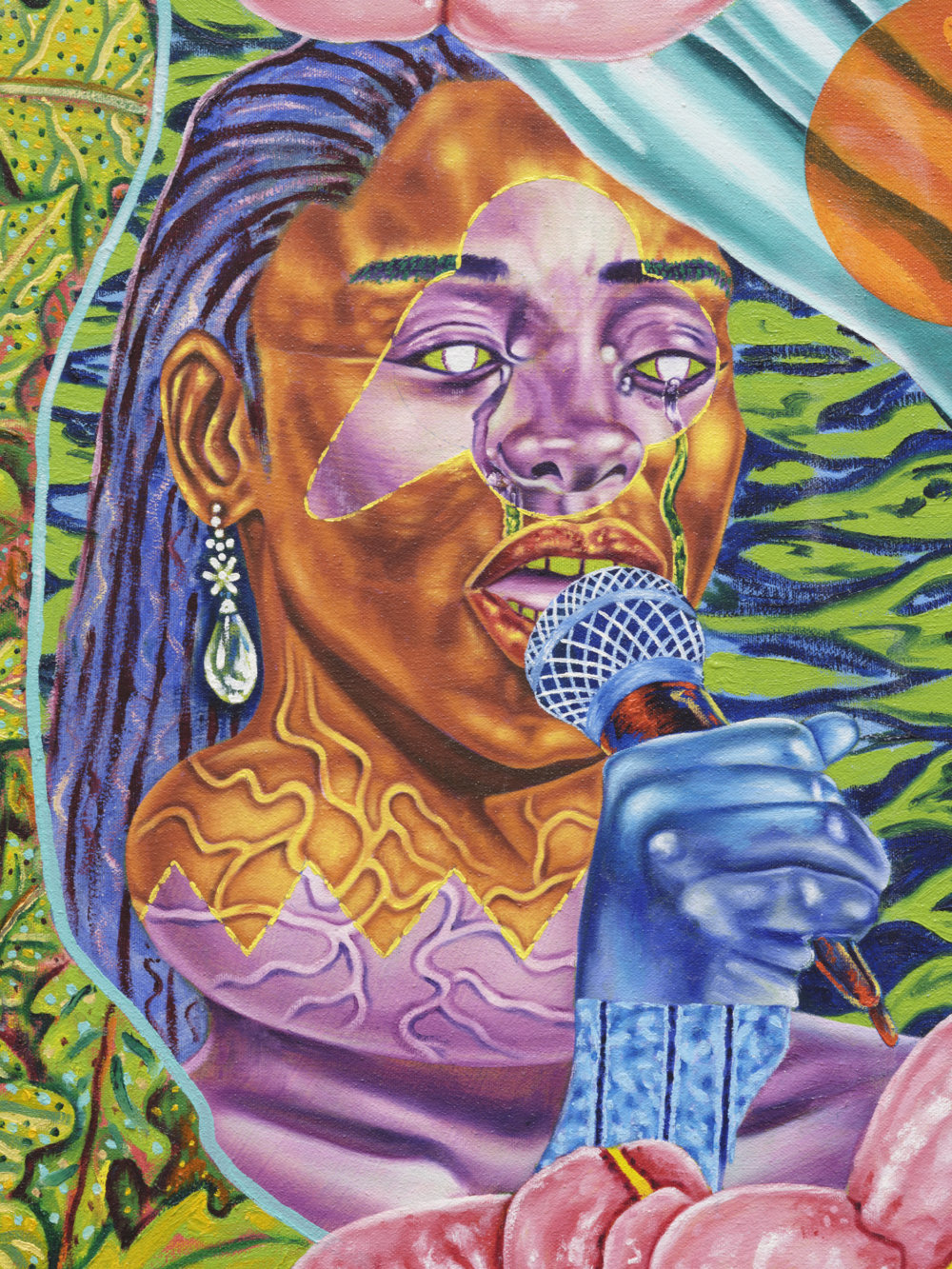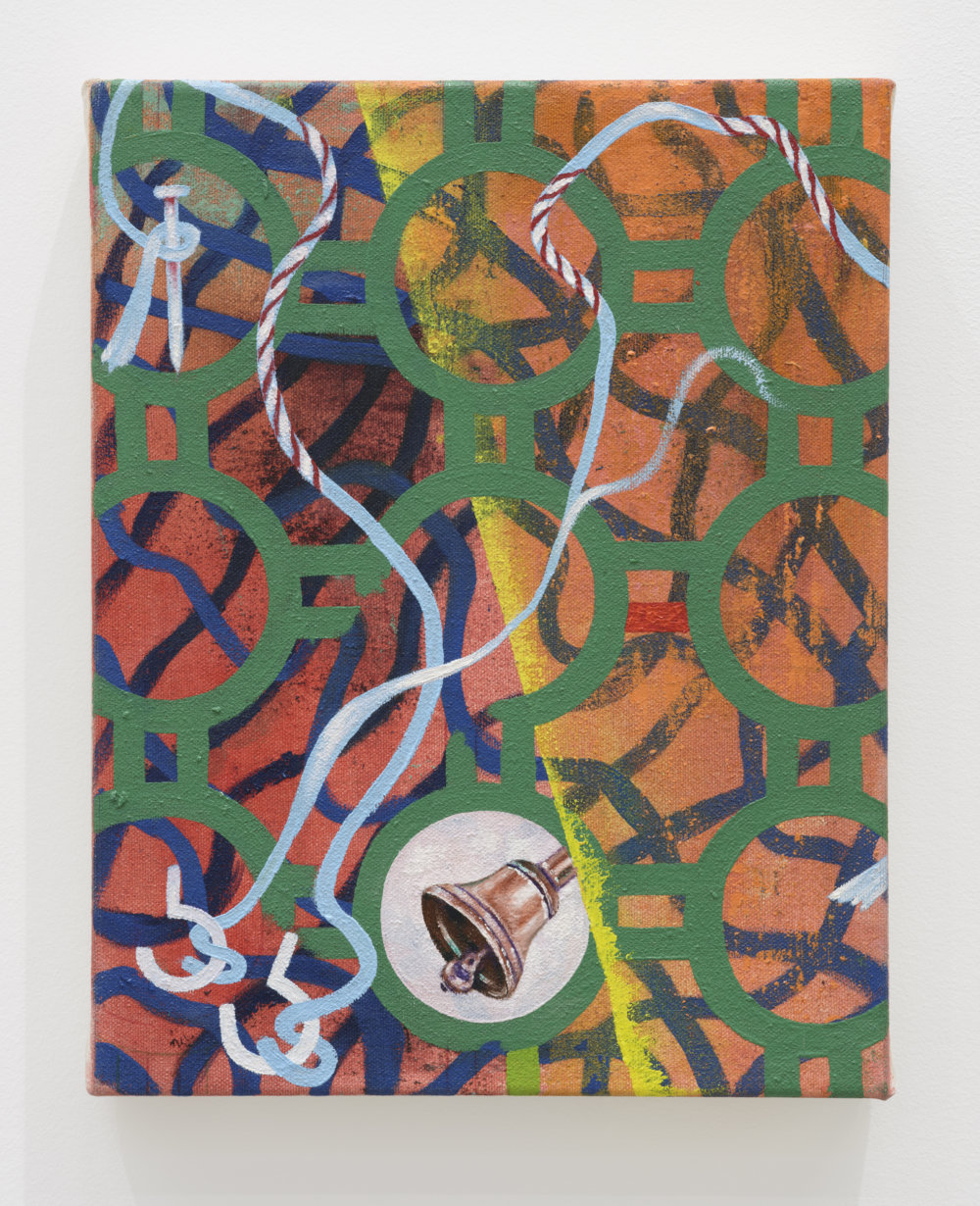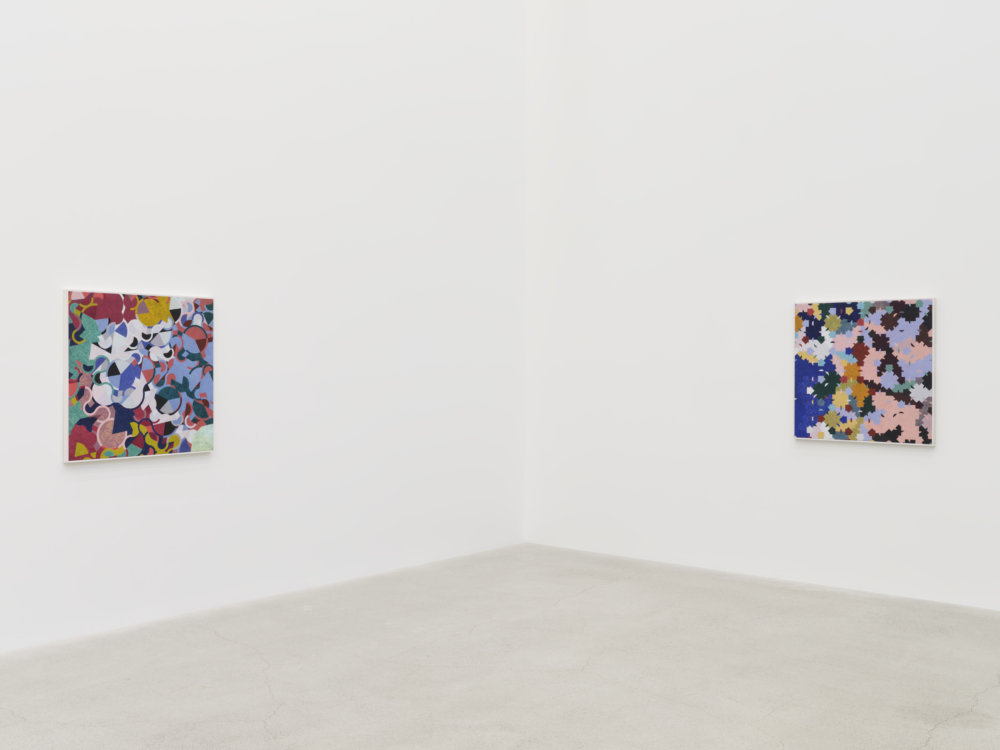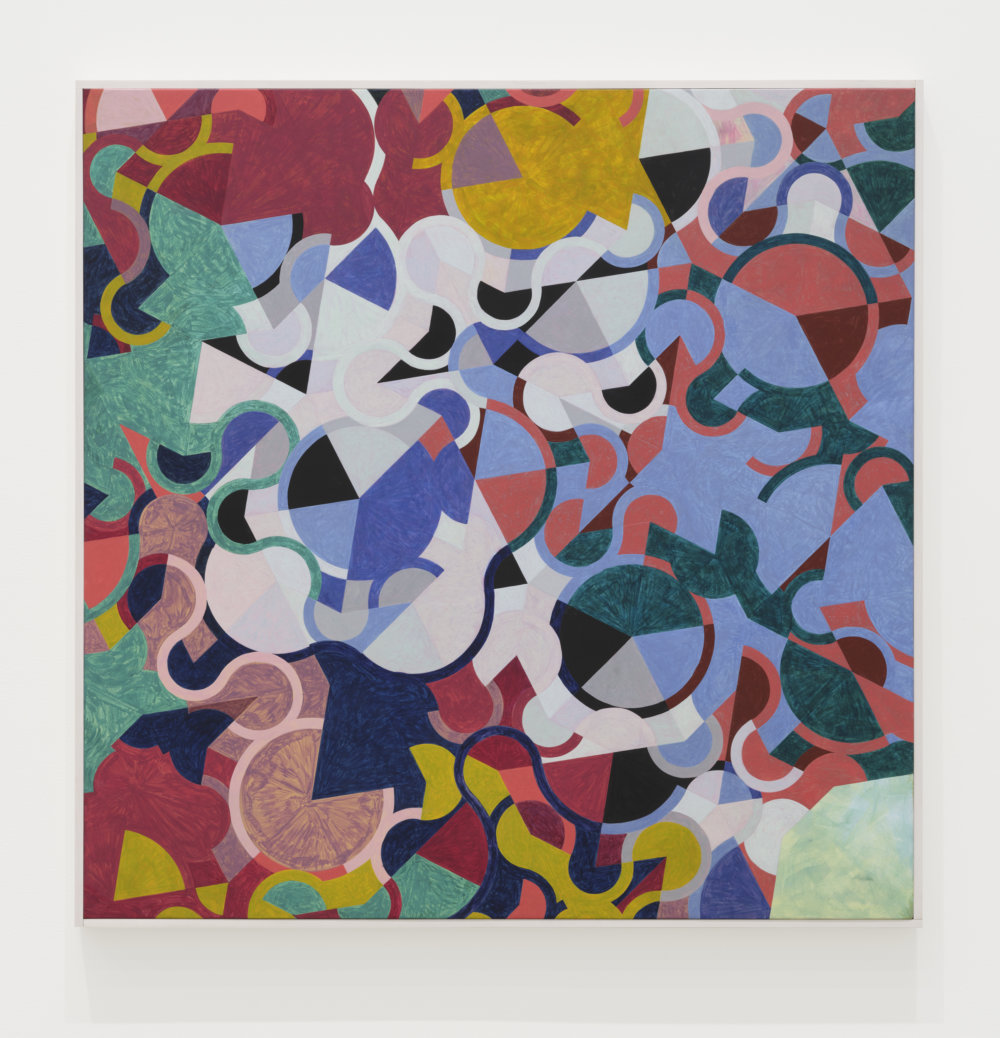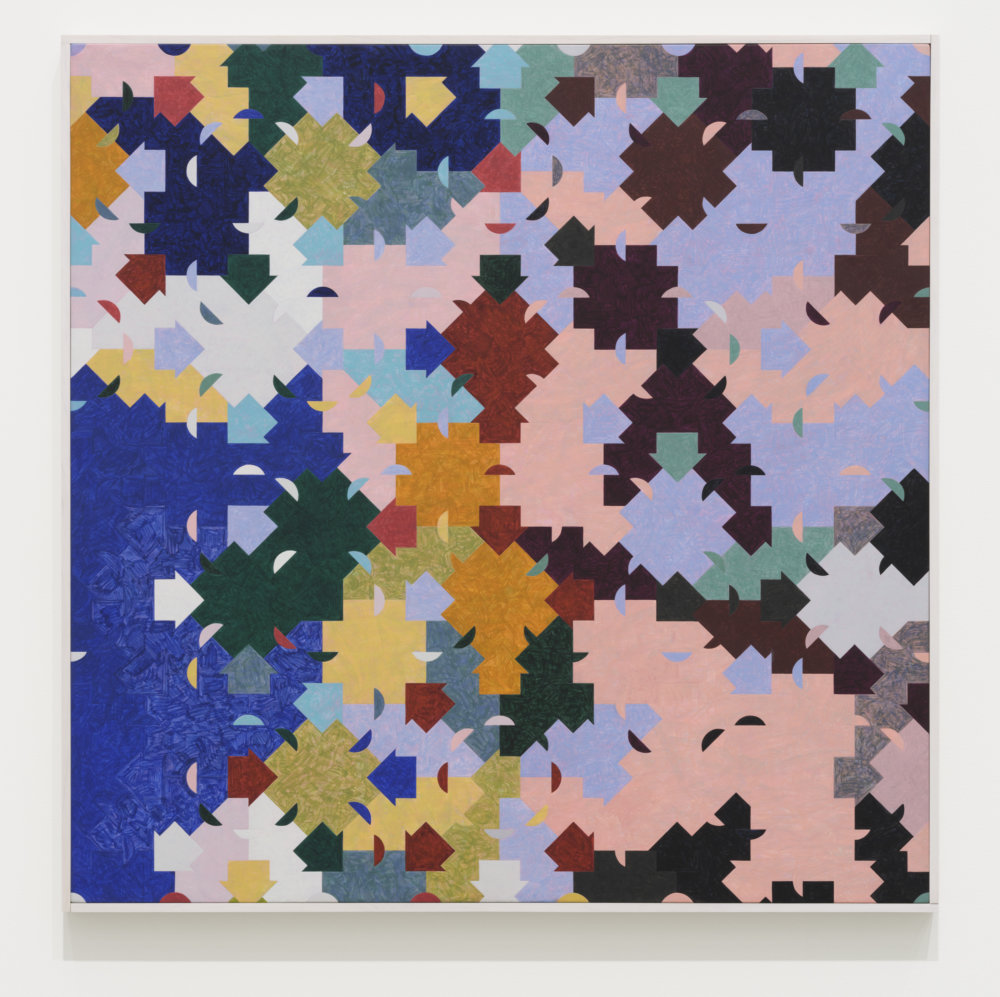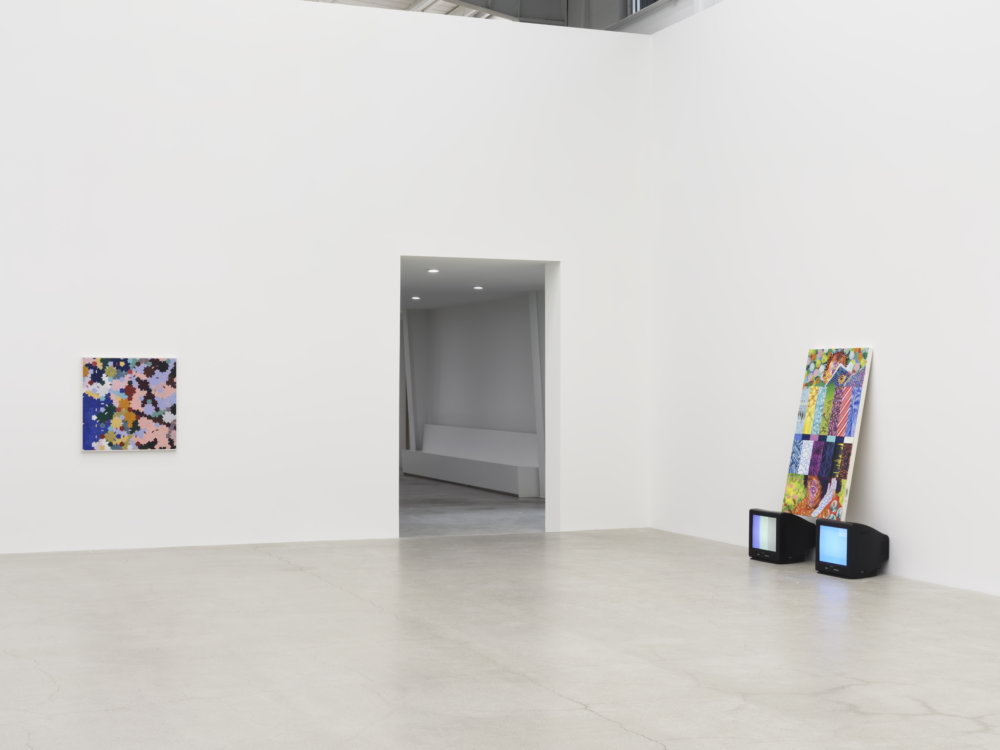Andrea Carlson, Chukwudubem Ukaigwe, Eli Bornowsky
No Exit
February 1–March 16, 2024
Patterning allows a picture to extend beyond its boundaries, offering a way of exceeding the otherwise ubiquitous rectangular frame. So prevalent is the frame that we often confuse a map for its territory, like the spherical Earth reduced to a flat representation. This is the price paid by all representations, the closed circuit of signification. Yet, within this frame, the pattern is both redundant and expansive, simultaneously existing within and beyond its confines.
The three artists in No Exit—Andrea Carlson, Chukwudubem Ukaigwe, and Eli Bornowsky—each employ patterning throughout their paintings in order to reference and deconstruct the nonvisible patterns that structure ecological seasons and social conditions alike. Manifesting as filmstrip repetition, architectural portals, and abstract tessellations, these patterns produce a picture of society that defies modernist myths of linear progress. Instead, they depict a world marked by a cyclical series of departures and returns.
Eli Bornowsky’s mathematically-informed compositions introduce some of the formal tactics that allow such expansive patterns to be captured within the frame. Making use of aperiodic tiling—wherein one or two repeating shapes seamlessly cover a surface without ever actually repeating an identical pattern—his egg tempera paintings depict fractions of infinitely unfolding systems. These tesselations visually reference the complex designs of Islamic architectural mosaics, as well as the quasicrystal structures found in the impact sites of meteorites and atomic bombs. These references are reinforced by the artist’s inclusion of ancient, terrestrial, and automotive pigments within the carefully prepared egg tempera. Built up in layers, the luminous paint is systematically applied to create “puzzle matching” across the tile’s carved edges, acting as perceptual puzzles to be constructed and reconstructed in various combinations.
In these kinds of aperiodic patterns, ambiguous designs produce the phenomenon of multistable perception—causing one’s perception to alternate between mutually exclusive perceptual states (for instance, photographs of craters might appear to resemble plateaus or pits, but never both at once). This multistable ambiguity is very much at play within Andrea Carlson’s multipanel composition Perpetual Care (2024). Initially appearing as sprawling, prismatic mosaics with mirrorlike symmetry converging on a central point, they combine the horizontal logic of a stitched panorama with the vertical sequencing of a filmstrip. Each individual panel possesses the aspect ratio of a cinematic frame and operates as its own landscape receding into an infinite horizon line, while repeated masks, horses, and folded paper designs echo at offset intervals, overlaying several patterns at once. The overall effect exacerbates the ability of a rectangular frame to portray our spherical Earth. By incorporating imagery asserting Indigenous presence and futurisms, alongside voyeuristic contrivances of the settler imaginary (the 1962 exploitation film Mondo Cane, for example, recurs throughout several of her works), Carlson fractures cinematic worldviews and displaces the viewer in a landscape without fixed time or space. Are we facing the triangular vanishing point of an unfolding highway, or are we watching the receding wake of a distant boat? Mountains thrust upward, and defaced masks face the sky, pulling forth from the earth and alluding to an axis of the pattern beyond the visible here and now.
Oscillating between multistable perceptual patterns yields what is called a “paradigm shift”. For Chukwudubem Ukaigwe, whose dense and vibrant paintings feature architectural patterns inset with referential vignettes, this shift hinges not only on a confusion of the picture’s figure and ground, but on what Ukaigwe calls a “paradox of aspirations.” In his painting Ain’t I at the Gate (Titled after Lubrin)? (2023), the hymn “I’ll Fly Away” is juxtaposed with Gil Scott-Heron’s “Whitey On the Moon”—a song of escape and redemption on one hand, with a critique of terrestrial abandonment on the other. Elsewhere, amidst complementary textile and floral patterns, a singer weeps into a microphone while her throat swells with an unexpressed blockage. Does the unjust illogic of the world provoke dejection or fabulation? Perhaps they proceed hand in hand, as in Limits (Shutter speeds past apertures) (2023), where repeating circles depict beads, vases, lenses, and portals through to the underpainting beneath.
Like Bornowsky’s puzzle matching and Carlson’s cinematic multipanels, Ukaigwe’s pictures sprawl across sewn canvases and found objects. Overlapping silhouettes and interwoven scenes give rise to synecdochal snapshots and patterns of patterns, using piecemeal approaches to depict what is otherwise unpicturable about colonization, resource extraction, and ambivalent creativity. These three artists, in shared and disparate ways, each articulate a picture of the world comprised of recurring patterns and cyclical relationships—using fractal elaborations to secure agency amidst the historical and material conditions from which there is no exit.
Andrea Carlson (Ojibwe, b. 1979; lives/works northern Minnesota and Chicago) works in film, drawing, and painting to create intricate imagery that maps the mosaic entanglement of cultural narratives and institutional authority as they relate to land possession, assimilation metaphors, and Indigenous futurisms. Carlson’s solo exhibitions include the MCA Chicago (2024); University of Michigan Museum of Art (Ann Arbor, 2022); Bockley Gallery (Minneapolis, 2020); Telemark Kunstsenter (Skein, Norway, 2016); Minneapolis Institute of Art (2016); La Centrale galerie Powerhouse (Montreal, 2016); Plug In Institute for Contemporary Art (Winnipeg, 2014); Plains Art Museum (Fargo, 2010); and the Smithsonian’s National Museum of the American Indian (New York, 2009). Recent group exhibitions include the Whitney Museum of American Art (New York, 2023); The Momentary (Bentonville, 2022); Front Triennial (Cleveland, 2022); Toronto Biennial of Art (2022); Various Small Fires (Los Angeles, 2022); and Minneapolis Institute of Art (2019, 2015).
Carlson has been awarded numerous grants and fellowships including the United States Artist Visual Art Fellowship (2022), a Joan Mitchell Center Residency (2020), and a Joan Mitchell Foundation Painters and Sculptors Grant (2017). In 2020, Carlson co-founded the Center for Native Futures—the only Native art center in Chicago.
Chukwudubem Ukaigwe (b. 1995, Lagos; lives/works Winnipeg) is a Nigerian-born artist, curator, and writer whose interdisciplinary practice explores semiotic dissonance as a form of rewriting in the margins of a palimpsestic history. His solo exhibitions include Neutral Ground (Regina, 2023); Artspeak (Vancouver, 2023); AMG Projects (Lagos, 2022); Videopool (Winnipeg, 2022); and Flux Gallery (Winnipeg, 2019); with group exhibitions at Kunsthal KAdE (Amersfoort, Netherlands, 2023); Confederation Centre of the Arts (Charlottetown, 2023, 2022); Dazibao (Montreal, 2022); The Koppel Project (London, 2021, 2020); Platform Centre for Photographic and Digital Arts (Winnipeg, 2021); Jeffrey Deitch Gallery (Los Angeles, 2021); Agnes Etherington Art Centre (Kingston, 2021); ADA Contemporary Art Gallery (Accra, Ghana, 2021); and Or Gallery (Vancouver, 2021). Ukaigwe’s writing has been published in BlackFlash, Akimbo, Toned Magazine, and numerous exhibition catalogues. He holds a BFA from the University of Manitoba, Winnipeg, and was the 2020 recipient of the Scott Leroux Fund for Media Arts Exploration. Ukaigwe is a founding member of the curatorial group Patterns Collective.
Eli Bornowsky (b. 1980, Alberta; lives/works New York) is a painter, writer, and curator whose work seamlessly blends math, mysticism, and spirituality. His process incorporates algorithmically scripted compositions rendered in egg tempera to investigate the perceptual phenomenonology of polychromy and optical tessellations. Bornowsky holds a BFA from Emily Carr University of Art and Design, Vancouver, and an MFA from Bard College, Annandale-on-Hudson, New York. His solo exhibitions include Kings Leap (New York, 2021); Canton Sardine (Vancouver, 2020); and Burnaby Art Gallery (2014); with group exhibitions at Kayokoyuki (Tokyo, 2021); White Columns (New York, 2021); Vancouver Art Gallery (2016, 2009); Richmond Art Gallery (2015); Burnaby Art Gallery (2013); and Ottawa Art Gallery (2014). His writing has been published in Fillip, C Magazine, and Pyramid Power, and numerous exhibition catalogues.
Documentation by Rachel Topham Photography. Video of Eli Bornowsky and Chukwudubem Ukaigwe artist talk here.




